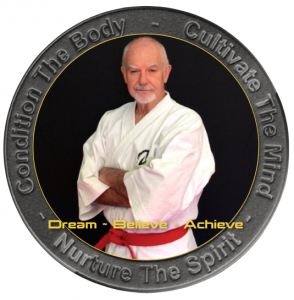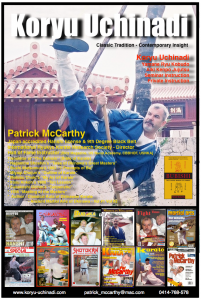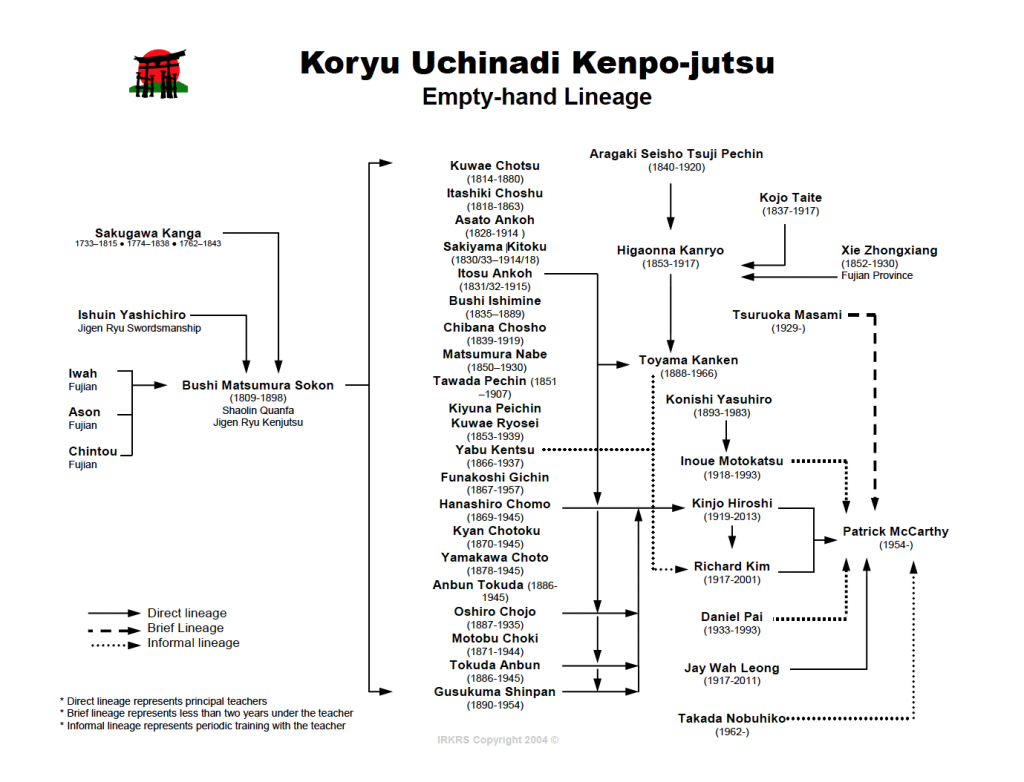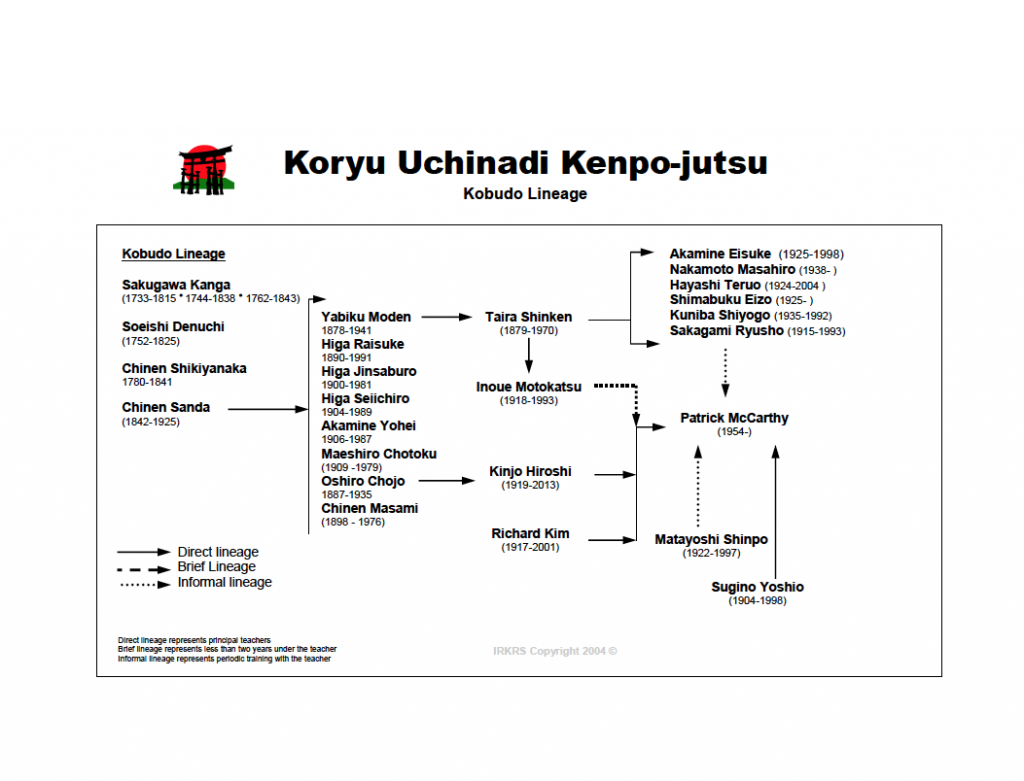
Originally from Canada I migrated to Japan during the mid 1980’s, married and spent many years there before relocating to Oz in 1995. I’ve studied the fighting arts since childhood and decided early on, “to live my dream?” I was able to successfully transform a passion into a profession and have never regretted taking that chance; now, I’m dedicated to helping other like-minded enthusiasts achieve their dream.
I’m competitive by nature, a trait reflected in pretty much everything I do. I love my work, am a positive person and believe that success is not a destination but rather a state of mind; “The pathway bridging desire to success is discipline.” I’m married to a remarkable woman [Yuriko], and we have two great kids; Bianca [a Scientist] and Taylor [a Lawyer].
I am a Japan-accredited instructor [Hanshi 9th Dan/範士9段], writer and founding director of the International Ryukyu Karate Research Society/琉球唐手術国際研究会… est.1989 in Japan. My publications include, ‘The Bubishi,” “Classical Kata of Okinawan Karate,” “Ancient Okinawan Martial Arts, Volumes 1 & 2,” “Tales of Okinawa’s Great Masters,” “Tanpenshu” [Funakoshi Gichin’s Finest Work], “Karate, My Art” [Motobu Choki’s Finest Work], “Legend of the Fist,” numerous articles/papers, etc., and a collection of educational DVDs, which focus upon the nature and application of my historical and technical studies of, “The Old-Ways.“
The IRKRS, is an information-based group, which brings together likeminded people in pursuit of common goals while celebrating empowerment, personal achievement & camaraderie through the traditional fighting arts. Like you, I am passionate about the traditional fighting arts but prefer functionality over empty ritual. I think Matsuo Basho/松尾芭蕉 [1644-1694] summed up tradition nicely when he wrote, “Seek not to [blindly] follow in the footsteps of the men of old but rather continue to seek out what they sought.” This timeless concept says so much about keeping tradition alive, rather than blindly adhering to “exactly how the master did it 75 years ago!” Gustav Mahler [1860-1911] echoed the exact same sentiment, when he wrote, “Tradition is not the worship of ashes, but the preservation of fire.” The IRKRS believes deeply in keeping tradition a living experience for the community it serves.
Some of the most important lessons, which lead to understanding the history, philosophy and application of karate, came from the following:
On Ko Chi Shin/温故知新
Amidst others, Funakoshi Gichin wrote, “To study the old is to understand the new.”
Tei Junsoku/程順則 [1663-1734] was a Confucian scholar, and government official during Okinawa’s old Ryukyu Kingdom. In addition to his official capacity as a politician, and Educator, Junsoku is also remembered for his moral contribution the local fighting arts; ”No matter how you may excel in the art of te/手, and in your scholastic endeavors/文,nothing is more important than your behavior and your humanity as observed in daily life.”
Bun Bu Ryo Do/文武両道 [The twin paths of the pen & sword] is an ancient and underlying precept which encourages physical fitness, intellectual study and moral education in the fighting arts. Well-schooled learners of the fighting arts exemplify this underlying principle it in their general attitude, daily behaviour and personal character. The fighting art’s heritage of Okinawa cite Bushi Matsumura [1809-1899] as one of the principal proponents of this important heritage. In spite of the functional-based training methods old-school practice emphasised, the original art was developed as a means of self-defence and tool for cultivating humanity. Preserved by his most visible student, Itosu Ankoh [1831-1915], the time-honoured precept represents an unwritten standard seemingly lost in the midst of today’s convoluted tradition. Echoed in the words of Itosu Ankoh’s most celebrated student, Funakoshi Gichin, “The ultimate aim of Karate lies not in victory or defeat, but in the perfection of the character of its participants.”
Through my studies I discovered how the application concepts of “old-school” Karate served as the pathway between kata and kumite. This link to the past became an important bridge to my future. Fusing timeless tradition with contemporary insight, I established the Koryukan [古流館] dojo in Fujisawa [Kanagawa, Japan] in 1989, with the support of my Okinawan Master [Kinjo Hiroshi/金城裕; 1919 – ].
Delivering my interpretation of the old-ways through a systematised collection of application-based practices, I call Koryu Uchinadi/古流沖縄手 [aka KU], it has rapidly become a welcomed addition throughout the Karate world. When I’m not overseeing the day-to-day activities of the IRKRS I spend much of my time travelling and teaching seminars on my HAPV-theory and 2-person drills.
Lineage Diagrams
The Scholar Warrior
http://www.youtube.com/watch?v=nmhzyX2KCuY



